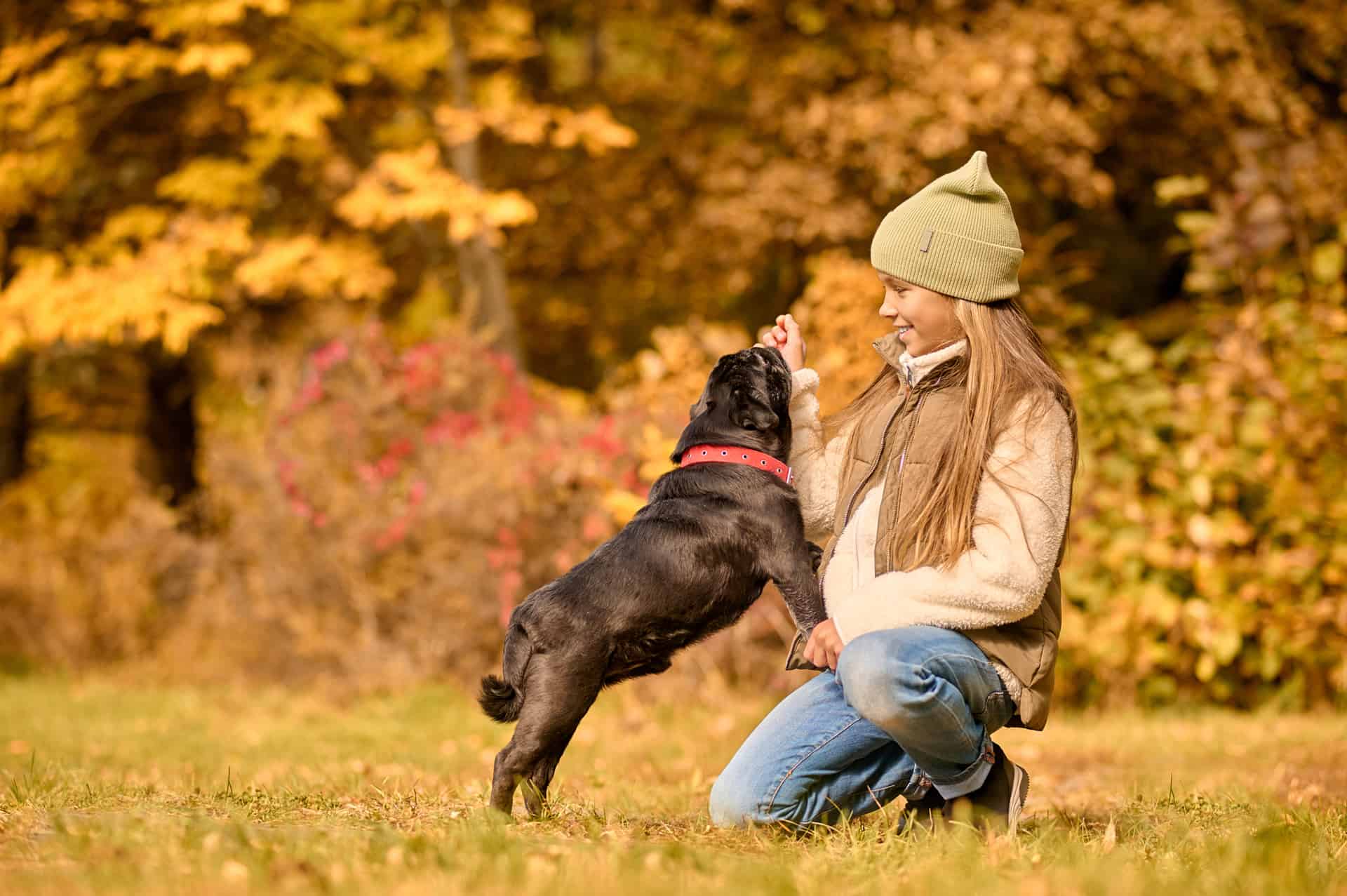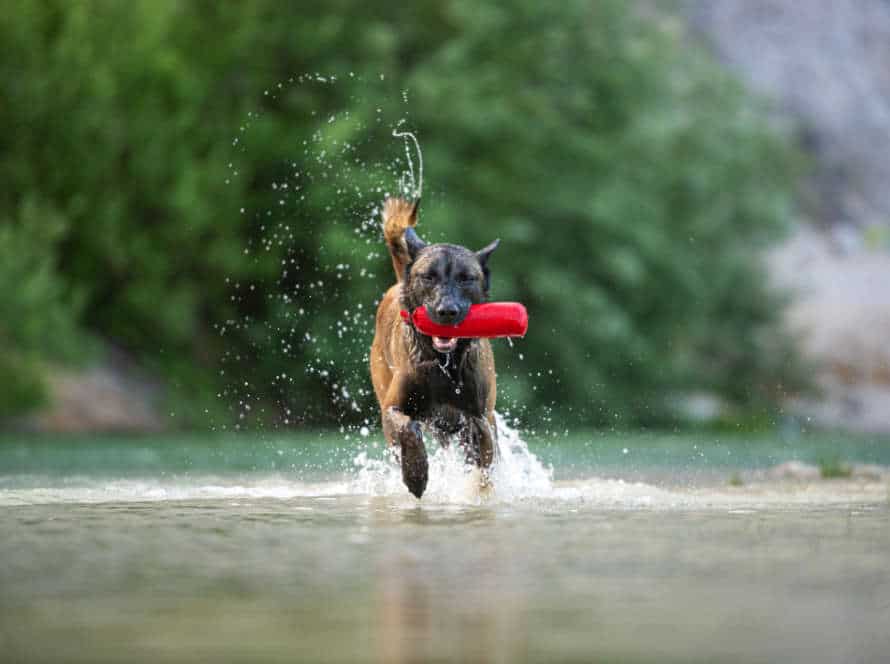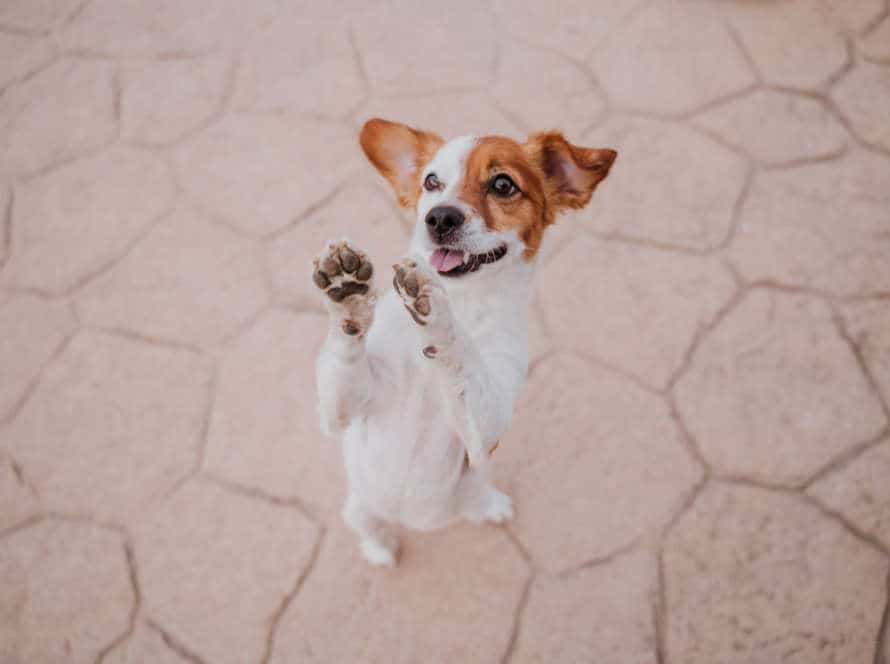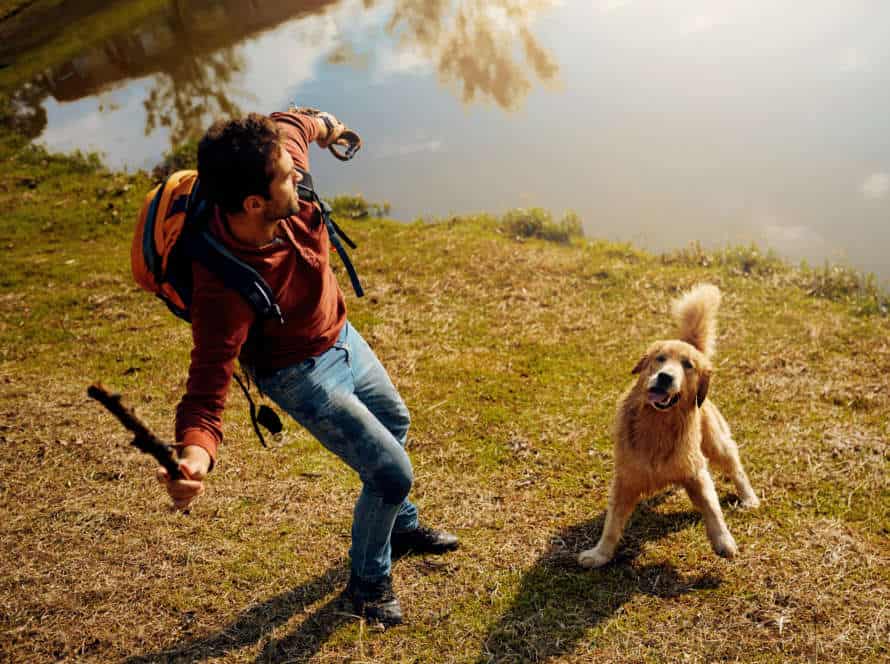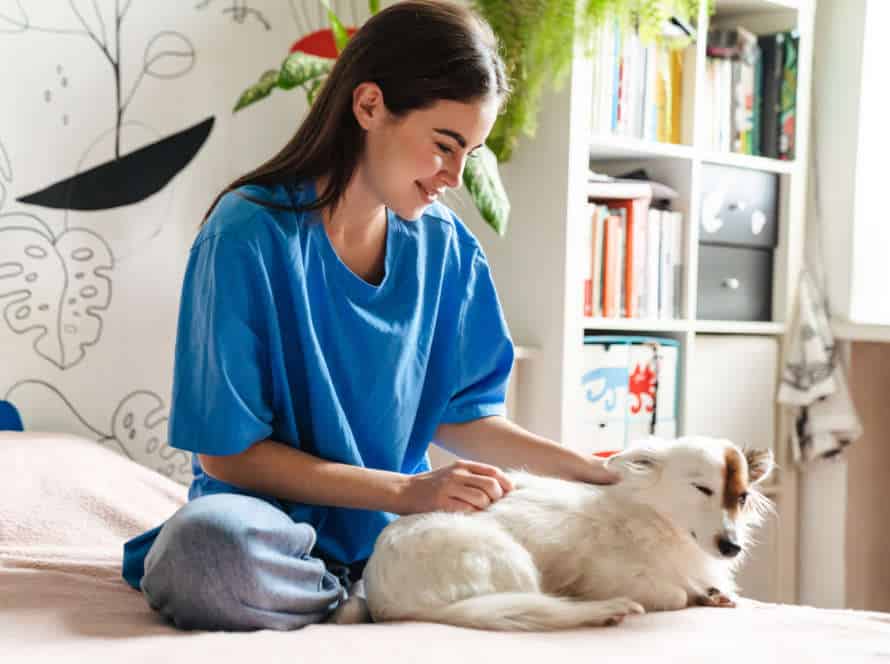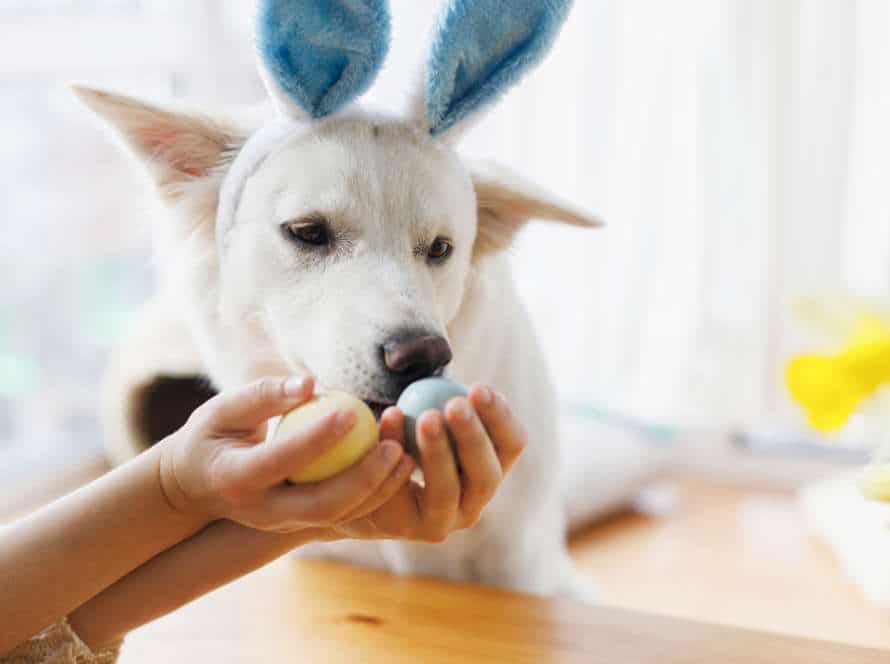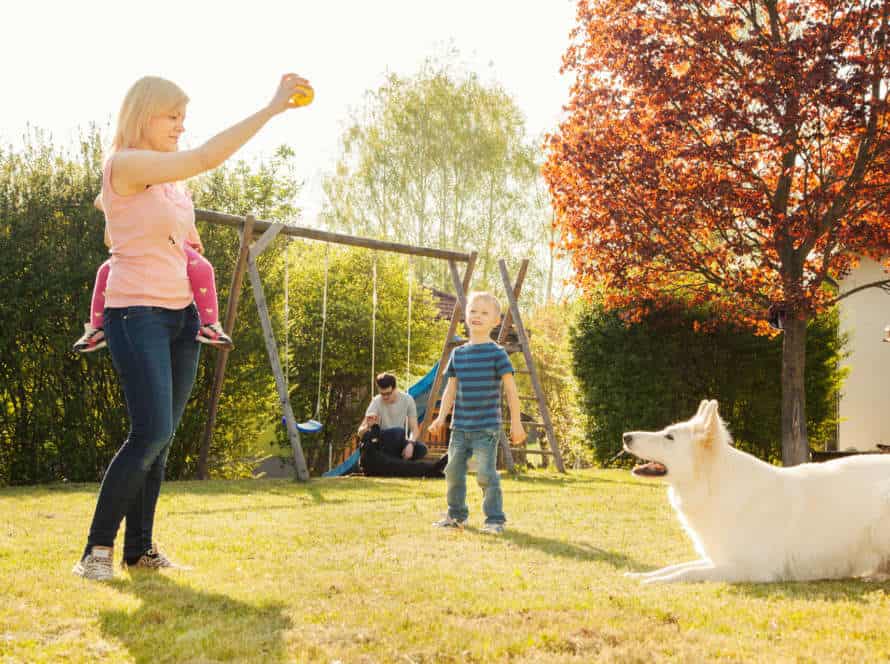Playtime as Training: Reinforcing Good Behavior Through Fun
Playing with your pet is an awesome way to reinforce good behavior and promote positive habits through fun and exciting activities. Here are some tips to make playtime work as training:
- Reward good behavior with toys – If your pet behaves well, like sitting or coming when called, give them a favourite toy as a reward.
- Incorporate training into playtime – Use playtime to practice training techniques like teaching your dog to fetch or play dead.
- Make training enjoyable – Include games and challenges during training to make it more exciting and rewarding for your pet.
- Keep playtime safe – Always supervise and make sure that toys are in proper condition and suitable for your pet’s size and strength. Pro Tip: Use treats and praise during playtime to encourage good behavior.
Importance of Playtime in Dog Training
Playtime is a great way to train your pup. Dogs learn important skills like self-control and communication through play. Plus, it strengthens the bond between you and your pup. So, why is playtime so important for training dogs? Let’s find out!
How Dogs Learn Through Play
Intelligent creatures, dogs learn through play. Incorporate playtime into your pup’s training! This can reinforce good behavior and create a stronger bond. Playtime helps release energy and reduces stress. This improves their learning capabilities. Plus, it helps with their socialization and cognitive development. Here are some tips:
- Choose interactive, challenging toys.
- Use treats or praise when they exhibit good behavior.
- Include commands like “drop it” and “fetch“.
- Pay attention to their behavior and adjust your approach.
- Incorporate playtime for more enjoyable learning. Pro tip- Use variety of toys and activities to keep them engaged and motivated.
Benefits of Incorporating Play into Training
Incorporating play into your pup’s training has various perks! Such as making the training process more cheerful for your pup and emphasising good behaviour through fun and positive experiences.
Here are some of its benefits:
- Enhances motivation: Playtime can help encourage your pup to learn new things and do better during training sessions.
- Strengthens bond: Playtime is an awesome way to strengthen the connection between you and your pup.
- Uplifts focus: When you make training entertaining and playful, your pup is more likely to stay concentrated and involved during training.
- Offers mental stimulation: Playtime can give your pup the mental stimulation they need to stay cheerful and healthy.
Pro Tip: Incorporating play into your dog’s training can be a great method to upgrade the training experience for both you and your cuddly friend. Make sure the toys you use are safe and suitable for your pup’s size and breed.
Common Challenges in Playtime Training
Playtime is a key part of dog training. It is used to strengthen good behavior. But, there are common issues that can reduce its effectiveness.
For example, lacking consistency in playtime routines. Dogs need routine, and inconsistent playtime can lead to confusion and disobedience.
Another challenge is using the wrong toys or equipment. Toys that are too small or too large can be dangerous. Toys that are too easy or too hard to chew can cause frustration or boredom.
Playing too rough or for too long can be unsafe and lead to injury for both the dog and the owner.
To overcome these issues, you need a consistent routine, the correct toys and equipment and monitor playtime for it to be safe and effective for training your dog.
Examples of Playtime Training Activities
Playtime is excellent for encouraging good behaviors in your pet. It also helps create a relationship between you and your four-legged pal. Playtime training rewards your pet with attention, physical activity, and teaches them to react to particular behaviors. Here are some playtime activities that you can use to reinforce good behavior:
Fetch: A Classic Training Game
Fetch is a great game for training your pup! Not only does it give physical exercise, but it also reinforces good behaviour with fun.
Here are some examples of playtime activities you can do with your dog:
- Throw and Fetch: Throw a ball or toy and have your pup bring it back. This can help teach them to bring items back to you, while also reinforcing the ‘drop‘ or ‘leave it‘ commands.
- Hide and Seek: Hide treats or toys around the house or yard, and let your pup find them. This helps them use their senses and can reinforce the ‘come‘ command.
- Tug-of-War: Use a tug toy and encourage your pup to grab and pull. This reinforces the ‘drop‘ or ‘leave it‘ command, and teaches them to release items when asked.
Pro tip: Incorporate training into playtime for great engagement with your pup and reinforcing positive behavior. Always supervise your pup when playing.
Tug-of-War: An Interactive Way to Train
Tug-of-War is a fun way to train your pup. But, there are a few important tips to keep in mind.
- Firstly, make sure your pup knows the commands “drop it” and “take it” – that’ll help them know when to release the toy.
- Secondly, watch the game carefully to make sure they don’t get too aggressive.
- Thirdly, start and end the game with praise when they behave well.
Plus, there are other activities you can use. Fetch, hide-and-seek, and obstacle courses are all great ways to reinforce good behavior. Pro tip: Keep the training sessions short for best results.
Hide & Seek: Reinforcing Recall and Search Skills
Hiding and seeking toys is a great way to help dogs improve their recall and search skills. Not only is it entertaining, but it also builds good behavior.
Here are some examples:
- Find the treat! Hide treats around your house or yard and let your dog look for them. Make it harder by hiding them in hard-to-find spots.
- Find the toy! Hide their favorite toy under a blanket, behind a pillow, or in a box. This helps them use their sense of smell and strengthens their search skills.
- Recall toys! Throw a toy a short distance away and get them to bring it back. Repeat this in various places and distances to boost recall skills.
Playtime is great for training your dog, plus it’s lots of fun! With these activities, you can strengthen your bond and reinforce good behavior.
Tricks and Commands That Can be Taught Through Play
Teaching your pup tricks and commands? Absolutely! It’s a fun, rewarding way to encourage good behavior. Playtime is the key! Use positive reinforcement to reward desired behaviors and introduce new commands. Playtime can help your pup learn faster and stay focused. What kind of tricks and commands can be taught through play? Let’s find out!
Teaching ‘Stay’ Through Play
Teaching your pup the “Stay” command using play? It’s a great way to reinforce good behaviour and make obedience training a blast! Here’s the scoop:
- Command your pup to “Sit” or “Lie Down.”
- Show them a treat or toy and bring it up to chest level.
- Give the “Stay” command in a clear and loud voice.
- Slowly move away while still holding the treat or toy at chest level.
- If they stay in the “Stay” position, reward them with the treat or toy and give them some praise.
- Gradually increase the distance and length of the “Stay” command, always rewarding good behaviour with treats, toys, or praise.
With regular practice, your dog will start to make a connection between the “Stay” command and positive reinforcement and will be more likely to obey in different scenarios.
Using Playtime to Reinforce ‘Come’
Play with your pup! It’s a great way to enforce the “come” command. Plus, you can teach them tricks.
- Fetch: Call their name and “come” when you throw the ball or toy. Reward with treats and praise when they return it.
- Hide & Seek: Hide, call their name, and say “come”. Praise and treat when they come.
- Name Game: Teach them the names of their toys. Call the toy and “come” when you throw it.
- Agility Training: Set up tunnels, jumps and obstacles. Practice “come” as they go through.
Make playtime training fun for your pet. Short, frequent sessions keep their attention.
Incorporating Toys to Train ‘Drop’ or ‘Leave It’
Playing with your furry friend can double as a training sesh. Teach them commands like “drop” or “leave it.” Toys make their playtime more productive and reinforce good behavior too. Here’s how you do it:
- Pick a toy your pet likes and will give up for a treat.
- Show them the toy and give the command.
- When they drop the toy, give them a treat and praise them.
- Repeat a few times and increase the time they wait for the treat.
- Once they master the command and drop the toy on command, repeat with different toys and in different environments.
Pro Tip: Make sure the toys you use are safe and supervise them during playtime!
Tips for Effective Playtime Training
Playtime can make reinforcing positive behaviors in your pet easy. Use it as a reward! Pets have fun while learning appropriate behaviors. To make playtime effective, pet owners need tips and tricks. Here are some:
- Use playtime as a reward tool.
- Make sure your pet is engaged in the activity.
- Be consistent and use the same command each time.
- Keep playtime short and fun.
- Reward your pet with treats or praise.
Establishing Boundaries and Rules for Playtime
Boundaries and rules for playtime? A must! This’ll ensure your pet’s reinforcement of good behavior through fun playtime. Here’s some tips:
- Start with commands – use playtime to reinforce “sit,” “stay,” and “come.”
- Boundaries – be clear where your pet can play and with what toys.
- Positive reinforcement – reward good behavior with treats and praise.
- No rough play – this can lead to aggressive behavior.
- End on a positive note – finish playtime with a positive experience.
Pro tip: Consistency is key. Repetition of rules & boundaries is essential for your pet to learn and adapt.
Choosing the Right Toys and Equipment
Pickin’ the perfect toys and equipment is super important for successful playtime training and rewardin’ good behavior with fun. Here are some tips to remember when choosin’ toys and stuff:
- Pick toys that are safe, durable, and age-appropriate.
- Think about yer pup’s size, breed, and character when picking toys.
- Use interactive toys like puzzles or fetch toys to keep ’em engaged and mentally stimulated.
- Use training equipment like treat dispensers or clickers to reward good behaviour during playtime.
By gettin’ the right toys and equipment for playtime training, you can create a fun and rewarding experience for both you and yer pup while encouragin’ good behaviour.
Making Playtime Safe and Fun for Your Dog
Playtime is an essential part of a dog’s life. Making it safe and fun is key! Here are some tips for effective playtime training:
- Use playtime as a reward – link it to good behavior to make your dog more obedient.
- Variety is the spice of life – keep your pup entertained with different toys.
- Choose a safe area – make sure it is free from sharp objects and poisonous plants.
- Monitor behavior – if your pup starts to show aggression, stop the play and redirect them.
Following these tips will make playtime fun and productive for you and your pup!
Conclusion: The Benefits of Positive Reinforcement in Training Through Play
Positive reinforcement via play is a great way to train your pet and have fun at the same time. It’s a chance for your pet to learn and develop skills through activities that are enjoyable. Instead of focusing on the negative, this technique emphasizes the good behavior of your pet.
Here are some benefits:
- Reduce Stress: Playtime is great for reducing anxiety and stress for pets and humans.
- Build Trust: Positive reinforcement strengthens the connection between you and your pet, resulting in trust and loyalty.
- Promote Good Behavior: Playing with your pet can encourage obedience and responsiveness to commands.
- Mental Stimulation: Engaging in playtime activities keeps your pet’s mind active and prevents boredom.
Using playtime as a training tool can have long-term effects on your pet’s behavior, leading to a strong, loving relationship.
Frequently Asked Questions
1. How can playtime be used for training my pet?
Playtime can be used to reinforce positive behavior by using toys, treats, and positive reinforcement during play. For example, if your dog sits when requested during playtime, reward them with a treat and continue playing.
2. What kind of toys are best for playtime training?
Toys that can be used for interactive play, such as tug ropes, balls, and interactive treat toys, are great for playtime training. These toys allow you to engage in play with your pet while also rewarding positive behavior.
3. Can playtime be used for all types of pets?
Yes, playtime can be used for all types of pets, from dogs and cats to birds and fish. The key is to find toys and activities that are appropriate for your pet’s species and breed.
4. Can playtime actually improve my pet’s behavior?
Yes, playtime can improve your pet’s behavior by providing a positive and engaging way to reinforce good behavior. When your pet associates positive behavior with fun playtime activities, they are more likely to repeat the behavior in the future.
5. How long should playtime training sessions last?
Training sessions with playtime should be short, typically no more than 10-15 minutes at a time. This will help keep your pet engaged and prevent them from becoming bored or distracted.
6. How often should I incorporate playtime training into my pet’s routine?
You can incorporate playtime training into your pet’s routine as often as you like, but try to make it a consistent part of their day. Aim for at least once a day, but ideally 2-3 times a day for shorter sessions.

